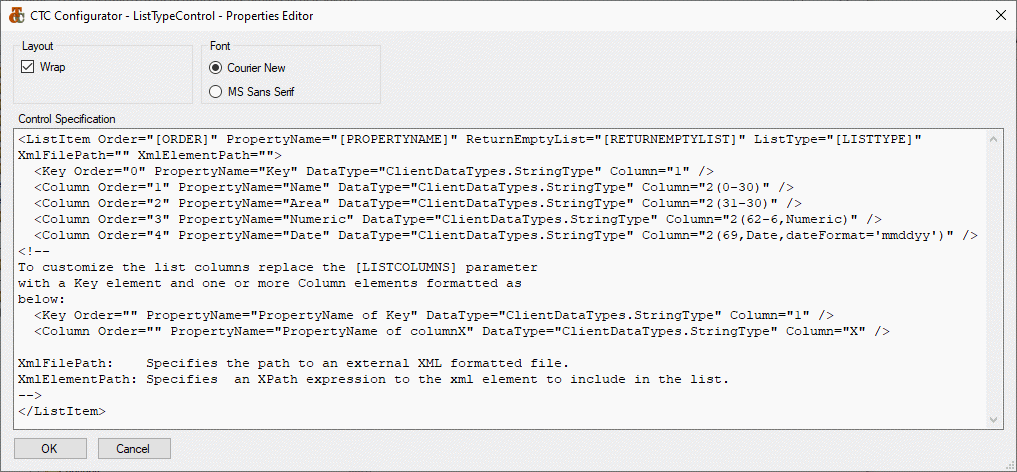
|

|
 |
Home > CTC Generators > Web Services Generator > Features |
| RESTful Web Services Easy to Invoke | Top of page |

| Data Format is Determined by Client Application | Top of page |

| CTC Web Service Controller | Top of page |
| Configurable Data Type Controls | Top of page |
| Alpha Type Control |
Controls the generation of data items defined as alpha-numeric. This includes Alpha and String types. |
|
| Boolean Type Control | Controls the generation of data items painted as a single Push Button or a single CheckBox that contain true/false values specified at design time. | |
| CopyFrom Type Control |
Controls the generation of a CopyFrom area. A CopyFrom area is generated as a .NET class with a property for each data item in a copyfrom row. |
|
| Date Type Control |
Controls the generation of data items defined as date. A date is generated as a .NET DateTime type. At runtime, dates in ispec date format are converted to universal date format when sent to the client application and converted back to the ispec date format when received from the client application. |
|
| Enum Type Control |
Controls the generation of data items painted as controls such as Push Button, Radio Button, List Box and Combo Box that contain a list of values specified at design time. This creates a .NET Enum type containing a list of valid values for a data item. This is then included in the Service Contract, making it easy for the client application to know the possible values for a property. |
|
| List Type Control |
Controls the generation of data items painted as a List Box or Combo Box that at runtime creates a dynamic list. A .NET class is created for the list with a property for each column in the list. |
|
| Maint Type Control | Controls the generation of the Maint field on standard component ispecs. |

| Web Services Testing Tool | Top of page |

| Custom Code Module | Top of page |
| Column Formatted Lists | Top of page |



| Alternate Services | Top of page |
| External Data Files | Top of page |
|
<ListItem Order="[ORDER]" PropertyName="[PROPERTYNAME]" ListType="[LISTTYPE]"
XmlFilePath="ExternalLists/Countries.xml" XmlElementPath="//country"> <Key PropertyName="CountryCode" DataType="" Column="code" /> <Column PropertyName="Name" DataType="" Column="name" /> <Column PropertyName="Population" DataType="ClientDataTypes.IntType" Column="population" /> </ListItem> |
| Automatic Setup of Application Infrastructure Files | Top of page |
| Automatic Compile and Build of the Generated Application | Top of page |
 As part of the generate process, the generator automatically compiles and builds the generated solution and any necessary dll’s. This is achieved using MSBuild, the build platform from Microsoft used by Visual Studio. This means the Web Services are ready to test or deploy when the generation of the solution is complete.
As part of the generate process, the generator automatically compiles and builds the generated solution and any necessary dll’s. This is achieved using MSBuild, the build platform from Microsoft used by Visual Studio. This means the Web Services are ready to test or deploy when the generation of the solution is complete.
|
This web site will be updated regularly with the latest details. | Last update: 24th February 2025
Copyright © 2025 Client Tools Consultancy. | All rights reserved. |